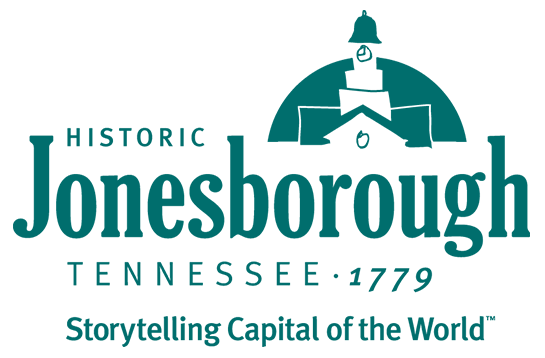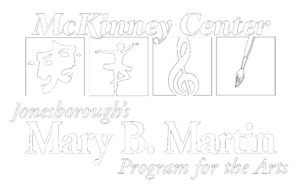The mission of the Chuckey Depot focuses on regional railroads in its exhibits, like the Southern, Clinchfield, and East Tennessee and Western North Carolina Railroad. This exhibit gives the Museum a chance to showcase items that come from all over the country, including a map of railroads in Ohio and a stock certificate for the Pittsburgh and Lake Erie Railroad Company.
The Chuckey Depot’s original home was just down the road in Chuckey, Tennessee, and now sits within WC Rowe Park in Jonesborough. In an effort to preserve the building, it was dismantled and re-erected in Jonesborough, where it opened as a museum in October 2017.
The Chuckey Depot Museum is located at 110 South 2nd Avenue. For more information, please call 423.753.1010. The Depot’s regular hours are Thursday-Sunday, 1pm-4pm. This project is brought to you by the Town of Jonesborough, Heritage Alliance of NE TN and SW VA and Watauga Valley Railroad Historical Society.
Chuckey Depot at Jonesborough Hours
March – September
Thursday: 1:00 pm – 5:00 pm
Friday: 1:00 pm – 5:00 pm
Saturday: 11:00 am – 5:00 pm
Sunday: 1:00 pm – 5:00 pm
October – February
Thursday: 1:00 pm – 4:00 pm
Friday: 1:00 pm – 4:00 pm
Saturday: 10:00 am – 4:00 pm
Sunday: 1:00 pm – 4:00 pm
History of the Chuckey Depot at Jonesborough
This train depot was originally located in Chuckey, Tennessee, approximately 15 miles southwest of its present location in Jonesborough, Tennessee. With the coming of the railroad, Fullen’s Depot, as it was originally called, established itself as one of the many stops for water and wood, to feed the steam powered engines. The original depot was described as a “simple shack with sides planked vertically”. A tin freight warehouse was located nearby. During this time, Fullen had officially changed its name to Chuckey by the US Postal Service in 1904. The original depot burned in 1905 and a new depot was built in 1906. This new Chuckey Depot consisted of two public waiting rooms and a ticket office. The freight warehouse was a kit construction brought in by the Southern Railroad and erected on site.
Communities such as Chuckey thrived as long as railroads remained the dominant mode of both travel and shipping. But as the interstate networks expanded and alternate modes of shipping became popular, businesses began to move away and the community of Chuckey, whose prosperity was so closely tied to the railroad, turned to larger towns such as Greeneville for commercial and retail needs.
The Chuckey Depot ceased to be used in the mid-1900’s and sat abandoned for decades. Sitting on the railroad’s right of way, the depot was threatened with demolition. Due to railroad policy, the building could not stay in its original location. The next step was to find another location for this iconic building. The Babb Family, who owned the depot, worked diligently within the community to identify alternate locations. Eventually the decision was made to relocate the building to Jonesborough. Jonesborough was eager to have the structure, there was a plan in place for its eventual use and Jonesborough has a proven culture of historic preservation.
In a perfect world, the building would have been saved in its original location, or at least found another home, along with a plan to properly care for and maintain the building in Chuckey. In the time provided by the railroad, that was not to be. Relocating a historic structure is never a good thing to do, but sometimes it is the only way to save it.
The job of moving the Depot from Chuckey to Jonesborough was a meticulous task undertaken by the Town of Jonesborough and the Heritage Alliance. A numbering system was created to identify the individual pieces of the structure prior to demolition. Specific codes were developed for each room of the building, with coordinates representing the compass ordinate of each element, its corresponding room number, and its position within that room. This similar coding system was repeated on the building’s exterior. For example, a window assembly removed from the north wall of the depot’s ticket room received the code N-TR-1 Window. A piece of interior crown molding from that wall of the same room received the code N-TR-CM 1. This process was repeated for literally thousands of different components throughout the structure. Each was entered into a corresponding database and entered into the measured drawings, completing the documentation process.
Dismantling, labeling and bundling the building took just over a month and was completed in August of 2011. During this time, the Town of Jonesborough was putting in place the necessary property agreements and identifying the team who would be tasked with its reconstruction. In almost all instances, original material from the depot was used in its reconstruction. Only in places where the original material was deteriorated beyond repair (such as the roof) were newer materials used.
Many of the artifacts found within and around the building while on its original site were preserved by the Babb family and were a part of their donation to the Town. These items are displayed throughout the museum and include an original waiting room bench, light fixtures, and public notice boards. Tusculum College’s Museum Studies Program, the Town of Jonesborough, the Heritage Alliance and the Watauga Valley Railroad Historical Society have been working together to develop exhibits for the public.
As the Chuckey Depot renovation was nearing completion, an Advisory Board was formed by the Board of Mayor and Alderman. The board is tasked with recommendations for the successful development and long-term operation of the railroad museum. The seven-member board includes the Mayor or his appointee, the president of the Watauga Valley Railroad Historical Society and Museum or their appointee, and the president of the Heritage Alliance of Northeast Tennessee and Southwest Virginia or their appointee. The additional four members are chosen from the community at large.
The board will set programmatic goals and directions for the Museum, establishing policy to govern the operations of the program, seeking artifacts and information that will enhance the interpretations program, approving acceptance of artifacts and interpretive materials and developing fundraising activities to support the operation and development of the museum. Additionally, the board will determine how money is spent, make recommendations on staffing, evaluate progress and development of the museum, assist in efforts to obtain volunteers, determine fees or charges, and any other duties requested by the Board of Mayor and Aldermen. The Chuckey
Depot Advisory Board is as follows:
Rick Chinouth
Mike Tilley
Jim Rhein, Chair
Anne Mason
Ryan Bernard
Frank Gricus
Jay Jarman
Matt Townsend





